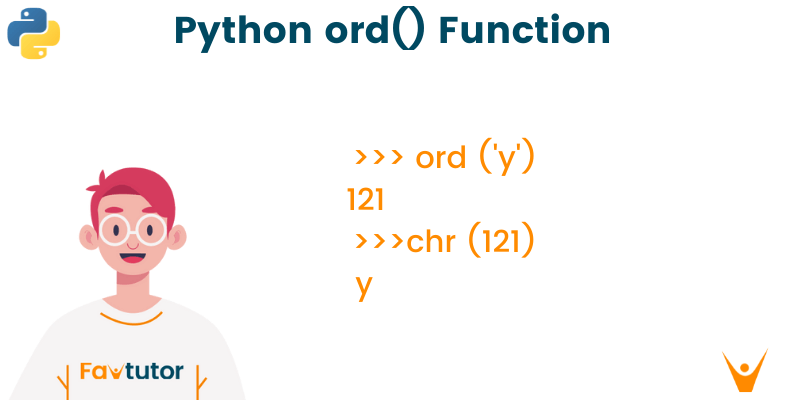Python is the easiest and most preferred programming language by any beginner stepping into the coding world. It is because python offers easy syntax and a huge range of in-built functions, which makes your programming very effective and efficient. That’s what every programmer looks for, isn’t it? In this article, let us study one such python in-built function named ord() along with its usage and example. So, let’s get started!
What is the ord() Function?
The python ord() function is an in-built method in python programming that returns an integer representing the Unicode character for your input string. Computer system only deals with the integers on a fundamental level. Therefore, in 1991, the Unicode Consortium organization declared standardized specifications for each character with their respective integer code. Unicode uniquely assigns each character that can be represented on the computer, whether a letter, symbol, space or emojis.
Here, the ord() function takes the single parameter, the string of length one and returns the Unicode character of that string as output. In short, you can say that the ord() function helps to convert the string character into the integer character.
Syntax of ord() function is:
ord(ch)
where ‘ch’ represents the string of length 1.
If you wish to apply the ord() function for multiple character strings, you have to retrieve each character from the string and use the ord() method. Remember that it is worth noting that ord() works with all Unicode characters, not just limited to numbers of letters. You can also use symbols with this method.
Python Ord() Function Example
Let us understand 2 scenarios where we can use the ord() function in python.
1) Python ord() function with one character
Suppose you are creating an application and wish to convert only a single character into an integer form to make your task efficiently. In this case, you can take the input from the user, which includes the string of length one and later convert it into Unicode character by using the ord() function. The below example shows how you can use the ord() function for one character input.
For example:
ch = input("Enter the character that you wish to convert ") unicode_val = ord(ch) print("The Unicode value of the ch", ch, "is", str(unicode_val))
Output
The Unicode value of the ch y is 121
As mentioned earlier, you can also use the ord() function for integers and symbols and convert them into their respective Unicode character, just like shown below:
For example:
ch = input("Enter the character that you wish to convert ") unicode_val = ord(ch) print("The Unicode value of the ch", ch, "is", str(unicode_val))
Output
Enter the character that you wish to convert } The Unicode value of the ch } is 125
2) Python ord() function with multiple characters
The python ord() function takes only one character as the input by default. But what happens if you wish to pass two or more characters through the ord() method? The answer is TypeError. When we pass more than a single parameter as input, the function will return the error named TypeError, displaying that the input string has more than one parameter.
For Example:
ch = input("Enter the character that you wish to convert ") unicode_val = ord(ch) print("The Unicode value of the ch", ch, "is", str(unicode_val))
Output
TypeError: ord() expected a character, but string of length 2 found
Therefore, when you wish to check the Unicode character for a longer string, you can split it into a single character and pass it through the ord() function. As shown in the example below, you can use for loop to iterate through each character in the string and pass it through the ord() function. Later, the ord() function will return and print the Unicode character for the respective string character.
For example:
ch = "Favtutor" for character in range(0, len(ch)): print(ord(ch[character]))
Output
70 97 118 116 117 116 111 114
Conclusion
While programming, there are many situations where you wish to check whether the string contains the alphabets or special characters. In this scenario, you can use the ord() function and check each character by its Unicode value. Therefore, it is highly recommended to use the python ord() function to compare the character and check whether it's an alphanumerical, special character, or emojis. To get more such technical knowledge, visit our blogs at Favtutor.








